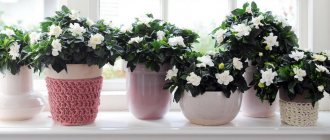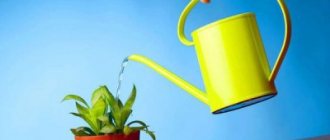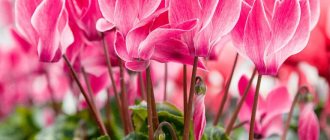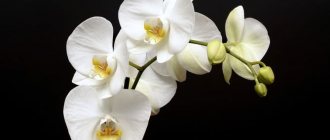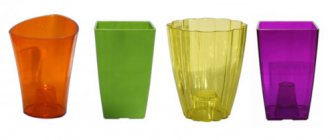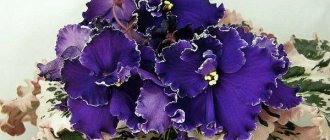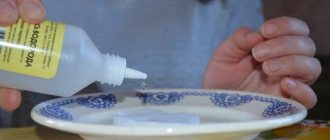Most summer residents and gardeners believe that flowering stimulants are not necessary and natural. The plant will independently understand when and how to carry out the flowering process. And also fruiting. However, these tools are good. And they greatly facilitate the work of gardeners and summer residents.
No one argues that nothing good should be expected when purchasing the very first drug and using it. It is necessary to approach the choice of a product that stimulates growth, flowering and fruiting wisely. And then your site will sparkle with new colors.
Flowering stimulator: what kind of drugs?
Flowering stimulants are a group of products that contain organic or synthetic hormones. They help increase the number of buds on a representative of herbaceous crops. They also contribute to the rapid start of formation and fruit bearing.
The formation of new buds is caused by hormones. For example, florigen. It consists of gibberellin and several anthesins. Gibberellin helps stimulate plants that require long daylight hours to bloom. And vernaline helps stimulate 2-year-old crops. And also in the winter season they are in the open ground at low temperatures.
Of course, nature has independently tried to ensure that phytohormones are formed in plants. For example, in seeds or in the upper part of plants that have been growing for many years. However, their number is very small. As a rule, it is barely enough for flowering and fruiting. But there is not enough to realize all the ideas of summer residents and gardeners.
Flowering and fruiting of plants
Hormones that cause the formation of future flowers include florigen and vernaline. The first of them, according to researcher Chailakhyan, consists of two elements important for flowering: gibberellin and anthesins. Gibberellin is necessary for those plants that need a long light period to bloom. The second type stimulates the flowering of other types of vegetation, for which the length of daylight is not important. The phytohormone vernaline, according to scientists, is needed for biennial plants that remain overwintering at low temperatures. It is produced in germinating seeds or in the tips of mature plants. But the amount of their own phytohormones in plants is negligible. Therefore, artificial feeding is very important during the period of preparation for flowering and fruit formation.
Vitamin mixtures help increase productivity. Their composition includes, along with sugar, sulfur, potassium, magnesium, and other minerals that influence the formation of fruits.
Flowering and fruiting stimulator helps:
- speed up the process of fruit ripening;
- strengthens the immune system and increases the content of vitamins;
- improves the taste of the fruit.
When choosing stimulating substances that promote color formation, priority remains with organic compounds, because they are least harmful to representatives of the flora.
Phytohormones formed as a result of metabolic processes in the body affect the growing season, the flowering phase and productivity. These are natural stimulants, the usefulness of which cannot be denied. The task of plant growers is to provide timely assistance to weak individuals who lack their own vitamins by introducing artificial preparations into the soil.
Advantages of using flowering stimulants
For abundant flowering and fruit bearing of representatives of herbaceous crops on your site, it is necessary to use flowering stimulants. These products are prepared from coal and peat. And also by other artificial methods.
The most effective are biological or natural remedies. Because they do not accumulate in the soil. And also, in addition to phytohormones, they include mixtures of vitamins.
In addition to its main purpose, flowering stimulants for plants and flowers have several more effects:
- improve the immunity of representatives of herbaceous crops;
- bring the fruits to full ripeness very quickly;
- improve the taste of the crop. They also increase the amount of vitamins in it;
- reduce the amount of nitrates in the crop.
Do indoor plants need growth enhancers?
The consumer decides whether to buy flowering stimulants or not. If you have exotic flowers on your farm that find it difficult to adapt to new conditions, then the use of generators is quite justified. It is important to remember to follow the instructions for use and adhere to the recommendations contained therein.
Modern plant growing widely uses stimulants for those individuals that do not have time to mature in Russian open spaces. The main condition that will help to obtain abundant formation of inflorescences: the treatment should not be carried out at the very beginning of flowering, so that there are no empty ovaries.
When used regularly, stimulants that cause abundant flowering and fruit formation bring tangible benefits and provide:
- quick harvesting from open ground before the onset of rainy and cold weather;
- when growing crops indoors, they accelerate the ripening of those crops that ripen late;
- increase the vitamin content, thus improving the taste of the crop.
By causing increased synthesis of chlorophyll and other pigments, stimulants accelerate the process of catalyzing growth and flowering, giving leaves and flowers a rich color.
The benefits of using phytohormones are obvious and undeniable. They are the basis for the active life of plantings, an energy charge that provides them with the necessary vitamins and microelements.
14.10.2017
Flowering stimulator: how to use correctly?
Flowering stimulating agents are used using different methods. As a rule, solutions of the product are used that are prepared strictly according to the instructions. And also passed through several layers of gauze. Each plant requires its own portion of the drug. Therefore, we do not recommend going beyond the norm.
In addition, there are rules for the use of flowering stimulants for all crops:
- The drugs should be used exclusively on days without any precipitation. And also without wind;
- the drug should be at room temperature. To prevent the plant from being stressed;
- Flowering stimulating drugs are not phytotoxic. Summer residents are required to have safety glasses, a mask and clothing.
Stimulation of orchid flowering. How to make a beauty bloom?
Stimulation of orchid flowering. How to make a beauty bloom
Everyone who purchases an orchid always brings it into the house already blooming and beautiful. But it often happens that at the end of flowering , you cannot wait long enough for your orchid to throw out its peduncle and again please you with the beauty of its flowering .
But you really want to admire the truly royal orchid bloom . So how do you stimulate an orchid to make it bloom ? We will study this very issue today.
A blooming orchid is the standard of beauty. Only a healthy and well-groomed plant is able to form flower stalks and set buds.
Reasons for lack of flowering
Lack of flowering is always a consequence that has its own explainable cause. An orchid is a plant that blooms at least 2 times a year, and if you have not seen flowers for more than a year, then you should understand the reasons for this phenomenon and eliminate them.
Violation of rest mode. One of the most common reasons why an orchid does not bloom is improper dormancy. Many people simply do not know how to provide the orchid with proper rest. We'll talk about how to organize it later.
Violation of the watering regime. Improper watering also negatively affects orchids. It is better to underfill them than to overfill them. Orchids that are watered abundantly very often may not produce fruit for the grower. They do not tolerate waterlogging. In places where they grow in nature, orchids never bloom during the rainy season because there is too much moisture.
Violation of lighting conditions. Lighting plays a very important role in the flowering of an orchid. Its deficiency or excess will lead to the fact that your picky woman will refuse to please you. She will help you control the light herself if you give her the necessary attention. It is enough to look carefully at the color of the leaves to determine. If the color is normal, then the leaves are green without pallor or darkness. If there is not enough light, they become dark green, but if there is too much light, the foliage will turn yellow.
Unhealthy roots. Roots are the basis of the plant and of course problems with the root system can lead to no flowering. When it has been gone for a year, it is worth examining the root system of your flower. With frequent watering, the roots very often begin to rot; even a small sign of rot will lead to the fact that the orchid will not bloom.
Rest period
The dormant period for an orchid is very important for subsequent flowering; if it is not provided, then you may not see any more flowering.
When does the rest period begin? This question interests all novice gardeners. As soon as the orchid has faded and its peduncle has completely dried out, the orchid enters a dormant period. This is a kind of vacation for the orchid on which it simply needs to be sent.
In order for the orchid to rest, it must be transported to a lower temperature. Choose the coolest room in your home, the ideal temperature for relaxation is no more than +18°C.
The light should be the same as for a blooming orchid, it should be enough.
Watering during the dormant period is reduced to a minimum; it should be carried out only when the substrate is already completely dry. Watering twice a month will be quite enough, and if the temperature is above ideal, then once every three weeks will be quite enough.
Seven ways to stimulate orchid blooms
When the orchid itself does not want to bloom, the owners have to help it and organize stimulation of flowering. There are several proven ways to stimulate an orchid to bloom, and we will, of course, consider them all.
Stress is a flowering stimulator
Stressing an orchid is an age-old way to force it to bloom. To do this, you need to send the orchid to a completely unusual place for it. A place under the bathroom is perfect. The ideal stress for an orchid is coolness, high humidity and lack of lighting. It must be sent to the link within 2 weeks. After this, place the orchid in its usual place.
Transparent orchid pot
The pot is very important for the flowering of the orchid; now there are a lot of them in stores. But it was and will always be the ideal pot for an orchid - a transparent pot, the same ordinary and nondescript, but very useful and ideal for an orchid. Because its roots really need light, the pot should always be transparent, even if you put it in a flower pot, it should also be transparent.
Additional illumination of the orchid
When an orchid's dormant period falls in the winter, it simply needs to be given additional lighting. An ordinary ice lamp is perfect; it needs to be turned on for 4-6 hours, depending on the length of daylight hours. If the sun sets already at 4 o'clock, then the light must be turned on for 6 o'clock. If there is little light, flowering may not begin until May.
Spending the night stimulates orchid flowering
If your orchid refuses to bloom at all, then you need to give it 2 weeks of tropical nights. Where it grows in the wild, night temperatures average +5°C. Therefore, the orchid will need to be sent to this temperature overnight. A corridor or basement is suitable as a night tropics, and if necessary, it can be placed in a refrigerator, if it can be created at this temperature.
Succinic acid - flowering stimulator
Succinic acid is a great helper for your orchid. It helps improve the health of your beauty. The use of succinic acid stimulates the orchid to release a peduncle, grow foliage and roots. For this purpose, you need to dissolve 1 tablet in 0.5 liters of water. It must be sprayed all over with this solution, and also watered with this solution. It is impossible to overdose with succinic acid, so you can constantly water, spray and wipe the foliage of your beauty with it.
Flowering and growth stimulator "Epin"
"Epin" is used to relieve stress in the plant. If there was a transplant or change of location, then it must be used for a non-blooming orchid. The foliage of the plant is sprayed with it; for watering it is never used exclusively by spraying.
Hot shower stimulates flowering
To stimulate flowering, use a hot shower once a week. Such a shower stimulates sap flow. You need to carry out the most ordinary watering, and after 30 minutes you need to buy the orchid under a hot shower, not just warm, but hot. The concept of a hot shower includes water at a temperature of +28...+35°C, but not higher than +35°C. Temperatures higher may burn the plant. Bathing is carried out for 40-60 seconds no longer. This shower can be done no more than once a week.
Orchid fertilizer for flowering
Until the orchid blooms, it needs to be fed. During this period, she simply needs additional nutrition so that she is as strong as possible and actively grows and gets stronger. It is best to use complex fertilizers that contain all the necessary vitamins and mineral fertilizers. If you use everything separately, it will be difficult for you to alternate and dose them. The advantage of the complex is that when diluted you will get the ideal concentration of all components that suits the plant.
When choosing a fertilizer, you need to get an opinion about it from those who have already used it and are using it. I and all my friends who are involved in breeding orchids settled on the “Master” fertilizer from. It is necessary to apply fertilizer only according to the instructions, not more often and without increasing the concentration. Overfeeding an orchid can also cause it to not bloom.
Fertilizer "Peters" for orchid blooms
"Peters" is the most popular fertilizer for orchids. It is sold in powder form and diluted in water according to the instructions. This fertilizer is aimed at rooting or flowering; there is also a form that combines both of these qualities.
“Peters Professional” is exactly the fertilizer that can be used for flowering orchids to enhance and prolong flowering, feed during the dormant period and stimulate flowering and the formation of new roots and leaves. This form of fertilizer is also used to reanimate plants that are sick. It is ideal for post-transplant recovery.
In general, this fertilizer is universal and you will not need to think about what period of your beauty’s life to use it so as not to harm it. For a beginning florist, Peters Professional is a real find.
Repeated flowering of orchid peduncle
When flowering has ended, this does not always mean that the orchid has completely faded and the peduncle needs to be removed. Do not do this under any circumstances. If the peduncle does not yet turn yellow, this means that it is not yet drying out and can bloom, but it needs help and stimulation.
“Cytokinin paste” will be an assistant in stimulating the flowering of the peduncle . This paste is nothing more than the hormone cytokinin, which is a powerful stimulator of flowering. However, remember that this paste can only be used on healthy plants. Plants that have suffered from diseases and weakened plants may not survive such powerful stimulation.
Cytokinin paste
In order to do this, carefully examine the peduncle, or rather the buds. If the scales on the bud are green and without dryness, then you can use these buds to stimulate the appearance of peduncle layering, which will produce flowering. Look at the scales in the photo:
Suitable kidney
Then take a thin needle, the most ordinary one you use for sewing. Dip it in alcohol to disinfect the needle and not harm the plant by infecting it.
Needle disinfection
Scratch the scale in the center and open it, revealing the bud as shown in the photo:
Opening an orchid bud with a needle
Then, using the same needle, apply the paste to the kidney, spreading it over the kidney. See the photo for how to do this. Then, after applying the paste, close the scale as in the photo:
Applying paste
That's all, wait for the bud to grow and your beauty to bloom again. Within a week you will receive layering.
Orchid care tips
When you carry out the necessary spraying, you must use a nozzle only with a fine spray. After spraying, be sure to check for water at the base of the leaves. If there is water in there, be sure to remove it from there by blotting it with a cotton pad, then wipe it with a cotton swab so that the base is dry.
When giving your orchid a hot shower, be sure to check the temperature and also remove water from the base of the leaves, otherwise they will begin to rot.
You shouldn’t change the place of the orchid often, it’s hard for it.
During the formation of buds, do not rearrange or move the pot of orchids, she will not like such anxiety, and she may partially discard them.
Never overfeed an orchid with fertilizers; it is better to have too little than too much; it is dangerous for their health. It is recommended to fertilize every second watering; you should not apply fertilizer every time.
When you stimulate an orchid to bloom and buy fertilizer for this, make sure that it contains potassium components. They are the ones who provoke flowering.
The most effective flowering stimulants
On the shelves of specialized stores you can see a huge number of similar drugs. But you can understand which of them are truly effective only by testing them on the site. You can also find a list of proven means on the Internet.
Before using any product, read the instructions carefully! Do not go beyond the norms of proportions. Do not forget that all representatives of herbaceous crops require the required dosage of drugs.
Bio Bloom
Flowering stimulator for plants Bio Bloom: photo
An entirely natural product that stimulates the flowering process. Helps increase yield by 20%. Increases plant immunity. It also reduces its level of sensitivity to low temperatures.
The product increases calcium assimilation. Helps stimulate the life process of microorganisms in the soil. It can also be used on representatives of herbaceous crops with variegated foliage to give a more decorative appearance.
Usage : add 2 ml of product to 10 liters of water. Use on fruit-bearing trees and shrubs during flowering. Vegetables are usually processed at the beginning of the flowering process. And also at the moment of formation of the ovaries.
The best stimulants of flowering and fruiting
You can find a variety of stimulants on the shelves of garden centers and stores. However, which of them exactly work can only be determined experimentally. If you don’t want to experiment, wasting time and money, choose proven drugs.
Before using any of the listed drugs, carefully read the instructions and do not exceed the indicated dosage. Remember that each culture needs a certain amount of stimulating substances and is ready to respond to it only during a strictly limited period.
Bio Bloom Stimulator
A completely organic flowering stimulator, increases fruiting volumes by 20%. Strengthens the immunity of plants, making them less sensitive to low temperatures. The drug enhances calcium assimilation and stimulates the activity of microorganisms in the soil. It can also be used on variegated plants to enhance the decorative appearance of foliage and increase its size.
Application : dilute 2 ml of the drug in 10 liters of water. Treat fruit trees and shrubs during the flowering period, vegetable crops at the beginning of flowering and during the formation of ovaries.
Delta Nueve Cannabiogen Delta Stimulant
This drug is a mixture of hormones, amino acids, nutrients and vitamins. Stimulates the flowering process, improves the flavor and aromatic qualities of fruits, and strengthens plant immunity.
Application : dilute 4-6 ml of the drug in 1 liter of water and spray the plants three times (a week before flowering, at the beginning of flowering and after 10 days).
Explode stimulator
Increases flowering intensity, plant viability and disease resistance, increases glucose production, which leads to improved taste of fruits. In addition, it stimulates the production of chlorophyll in the leaves.
Application : dilute 1-1.5 ml of the drug in 10 liters of warm water. Treat fruit trees and shrubs during the flowering period, vegetable crops at the beginning of flowering and during the formation of ovaries.
Stimulator Hesi Super Vit
A highly concentrated plant stimulant that accelerates the growth of green mass, increases the number of buds, and promotes better absorption of solar energy. The drug makes the plant less dependent on weather conditions and gives it all the necessary hormones and amino acids.
Application : dilute 1 drop of the drug in 4.5 liters of water and apply throughout the entire growing season with an interval of 10-14 days, spraying the leaves or watering the root space.
Ripen stimulator
Signals the plant about the imminent completion of its life cycle, which stimulates accelerated ripening of fruits and allows for earlier harvesting. Promotes the breakdown of nitrates in plant tissues, has a positive effect on the taste of fruits.
Application : dilute 5-6 ml of the drug in 1 liter of water. Spray plants in the last 10 days of flowering.
Top-Max stimulator
Organic preparation containing humic acid. Increases the number of buds and ovaries, improves the taste and aromatic qualities of fruits, and strengthens plant immunity.
Application : dissolve 1-3 ml of the drug in 1 liter of water. During the entire flowering period, add the solution when watering at the rate of 0.5-3 liters per plant (depending on size).
Stimulator Bud
A relatively inexpensive and very commonly sold stimulant, Bud, which contains humates and sodium salt of gibberellic acids. Suitable for all garden crops. Accelerates seed germination, stimulates the formation of buds and fruit ripening.
Application : dilute 1-2 g of stimulant in 1 liter of warm water. Treat fruit trees and shrubs during the flowering period, vegetable crops at the beginning of flowering and during the formation of ovaries.
Drug Delta New Cannabiogen Delta
Flowering stimulator for plants Delta New: photo
This product is a combination of hormones, vitamins, and amino acids. And also nutrients. Helps stimulate flowering, improves the taste of the crop and its aroma. It also increases the plant’s immunity.
Usage : add 4 – 6 ml of product to 1 liter of water. Spray the plant three times. 7 days before flowering begins. At the very beginning of the flowering process. And also a week later.
Drug Explod
Flowering stimulator for plants Explod: photo
Increases the power of the flowering process and the quality of plant growth. As well as the level of resistance to various infectious diseases and insect parasites. Increases the level of glucose produced. Which helps improve the taste of the crop. Generally promotes chlorophyll production in foliage.
Usage : add 1 – 1.5 ml of product to 10 liters of water at room temperature. It is necessary to spray trees and bushes that bear fruit during the flowering process. As a rule, vegetables are processed at the very beginning of flowering and at the moment of ovary formation.
Hesi Super Vit
Flowering stimulator for plants Hesi Super Vit: photo
The drug is completely organic with a high level of concentrate. Stimulates the formation of green foliage. Increases the number of buds. Helps plants more easily absorb the sun's energy. Saturates them with amino acids and hormones. And also nutrients.
Usage : add 1 drop of product to 4.5 liters of water. Use the entire growing season with a time interval of 10 - 14 days. Spray the foliage or moisten the soil.
Composition and form of fertilizer
Many amateur gardeners are interested in the question of how fertilizers for flowering crops differ from others. Such preparations are designed to encourage the appearance of inflorescences. Fertilizers for abundant flowering mainly contain phosphorus and potassium. Nitrogen is contained in minimal quantities.
When buying packages with mineral complexes, you can find the NPK designation on them. It is she who determines the purpose of the drug, indicating the percentage composition of the above-described elements.
Plants need potassium for photosynthesis, proper vegetation, and resistance to the adverse effects of surrounding microflora. Phosphorus is the basis of energy. It controls metabolic processes within the plant and is responsible for its very reproduction. Phosphorus is especially important during the formation of buds, inflorescences, and seed ripening.
Nitrogen is needed for flowering crops, but in much smaller quantities. Excess of the element will result in an increase in green foliage at the expense of its abundant blooms. Therefore, it is highly not recommended to use a product with a high nitrogen content to feed domestic flowering crops.
In addition, the nutrient contains various microelements and vitamins that are important for the healthy growth of green spaces.
Flowering stimulator Ripen
Flowering stimulator for plants Ripen: photo
Promotes rapid ripening of the crop. It also provides gardeners with early fruits. Helps break down nitrates in the tissues of grass crops. Helps improve the taste of the product.
Usage : Dilute 5 – 6 ml of product in 1 liter of water. Apply in the last week of flowering.
Drug Top – Max
Flowering stimulator for plants Top-max: photo
A natural product containing humic acid. Increases the number of buds and ovaries. Improves the taste of the crop and its aroma. It also increases the plant’s immunity.
Usage : add 1 – 3 ml of product to 1 liter of water. During flowering, pour the preparation into the soil while it is moistened. As a rule, 500 ml - 3 liters are used for each plant.
Drug Bud
Flowering stimulator for plants Bud: photo
Relatively cheap and widely known drug. It contains humates and sodium salt. Can be used for any representatives of herbaceous crops. It also promotes accelerated seed growth. Increases the number of buds and ovaries.
Usage : add 1 – 2 grams of the drug to 1 liter of water at room temperature. Spray fruit-bearing trees and bushes during flowering. Vegetables - at the beginning of flowering and at the moment of formation of ovaries.
Fertilizer application timing
Sometimes gardeners think that a plant needs fertilizing only at the moment of rapid flowering. This formulation is not true. The period of bud formation is accompanied by flowering. Both the formation of inflorescences and flowering are the phase when the plant expends maximum energy. Therefore, you need to add nutrients to your pets in both periods.
More often, houseplants form buds and also bloom from spring to autumn. During this period, crops require feeding with minerals.
There are also exceptions among representatives of indoor fauna. Let's say that azalea forms flower stalks in the fall and blooms in winter, so you need to fertilize the crop with the arrival of cold weather.
During the period of growth and development, during dormancy, feeding flowers is not recommended.
Flowering stimulator Ovary
Flowering stimulator for plants Ovary: photo
Promotes rapid ripening of the crop. Increases the number of fruits. Increases the level of plant resistance to various infectious diseases and insect parasites. And also adverse weather conditions. Can be used for any representatives of herbaceous crops.
Usage : add 2 grams of product to 1 – 2 liters of water at room temperature. Apply to fruit-bearing trees and bushes during the flowering process. Process vegetables at the beginning of flowering and at the time of ovary formation.
Stimulating the flowering of indoor plants
The highest reward for a gardener is the lush flowering of indoor plants. In anticipation of this, time and effort are spent, the rules for the care and maintenance of home flowers are observed, the most comfortable conditions are created, and many tricks of indoor floriculture are applied. Flowering is the completion of the plant's vegetative cycle. Most plants bloom at the same time every year. In the garden, for example, tulips bloom in April, rhododendrons in May, roses in June, yellow lilies in July, phlox in August, Japanese anemone in September. But there are plants that bloom extremely rarely. These species need to reach maturity to produce flower buds. Some cacti produce flowers only in the 10th or 15th year of life, and bamboo generally blooms once every 80-100 years! In our latitudes, with a clear change of seasons, plants bloom almost every year under the influence of climatic conditions. They experience a period of growth (spring, summer), a period of slow growth (autumn) and a period of vegetative dormancy (winter). Their biological rhythm is associated with the seasons, so most species go through a full vegetative cycle in a year.
However, in our home we grow plants from different parts of the world, sometimes even from another hemisphere, which are accustomed to completely different climatic conditions. Therefore, problems with flowering are not the exception, but the norm. In addition, not all indoor plants can give us flowers as many times as we want. Azaleas, primroses, cyclamen, cineraria, exacum, brovallia, begonia, etc. Unfortunately, after flowering they are no longer of any interest, and these indoor plants have to be regularly renewed. For plants to bloom, we must awaken their “survival instinct”, that is, they must experience maximum inconvenience (winter for our garden plants and a period of drought for tropical species) in order for the reproduction process to begin. If plants live in comfortable conditions all the time, as is often the case in our homes, they do not “feel the need” to reproduce. Therefore, to stimulate flowering, create the most uncomfortable conditions for the plants. First of all, for the formation of buds, a difference between day and night temperatures is required . A plant constantly living in a room at a temperature of 18-20 C will produce only leaves. But if you manage to lower the temperature at night to 15 C, the chances of flower buds appearing will increase significantly. Many types of houseplants require a true period of vegetative dormancy before they stop growing. During this period, they are watered much less often and much less. Therefore, the temperature can even drop to 10 C. This can only be done in a cold greenhouse or on the veranda, but this is the only way to make orchids and cacti bloom. Bulbs, tubers, rhizomes are storage organs that help the plant withstand severe weather changes and survive during periods of drought and cold. In order for a bulbous plant to bloom, it must be kept without water in a very cool room after flowering . This is what you should do with amaryllis and cyclamens.
There are single-fruit plants that bloom only once and die after fruiting. These are bananas, bromeliads, agaves and some palms. Therefore, it is only natural that these plants take several years to bloom. If you want to encourage mature plants to flower, place the plant under plastic wrap along with a halved apple, which will release ethylene. The flowering process is directly related to the lighting of indoor plants . The amount and intensity of light a plant receives directly affects the formation of flower buds. Depending on the flowering period in natural conditions, different types of indoor plants are sensitive to either long or short daylight hours. Late-blooming chrysanthemums, nerines, schlumbergeras, poinsettias, cyclamens, kalanchoes and too early-blooming azaleas, primroses, etc. bloom at the moment when the day is shorter than the night. It is enough to place these plants in a dimly lit place for several weeks, and flower buds will begin to form on them. On the contrary, plants that bloom in summer - bougainvillea, pelargonium, stephanotis, allamanda, saintpaulia, gloxinia - need short nights to bloom. Artificial lighting guarantees the appearance of flowers.
